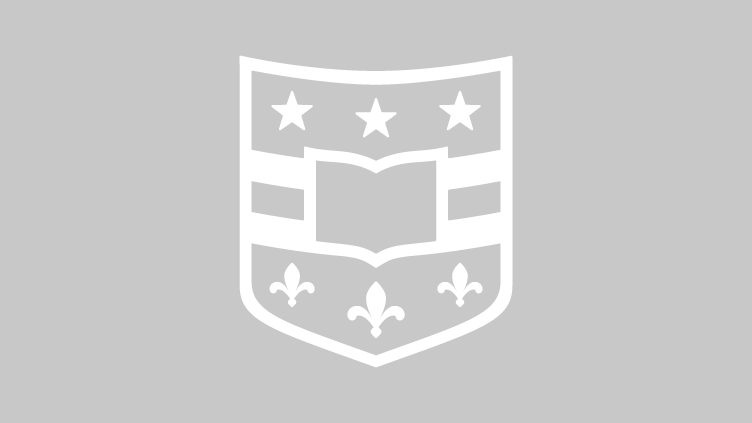Sweat does more than just cool bodies
Everyone sweats, but it’s unlikely many people ever consider the social and economic impact of our bodies’ built-in air conditioning system. With summer’s hottest days likely still to come, Michael Heffernan, assistant professor of dermatology at the School of Medicine, helps St. Louis Post-Dispatch writer Jeff Daniels take a closer look at this hot topic.
Fewer calories lead to longer lives
Scientists have known for years that eating less tends to make animals live longer, but no one is quite sure why. Several School of Medicine researchers studying the effects of caloric restriction on humans may help provide an answer to that question. This story was written by Tina Hesman and published by the St. Louis Post-Dispatch.
WUSTL faculty present research at Alzheimer’s conference
MorrisStress appears to increase the severity of Alzheimer’s disease. That’s just one of more than 40 studies presented by Washington University researchers at the Alzheimer’s Association’s 9th International Conference on Alzheimer’s Disease and Related Disorders July 17-22 in Philadelphia. The University’s Alzheimer’s team is led by John C. Morris, M.D., principal investigator of the Alzheimer’s Disease Research Center.
Easy-to-follow rules can prevent serious injuries for child bicyclists
For decades, bicycles have been a recreational mainstay for youngsters, especialy during the summer months. Bikes can, however, become extremely dangerous and even deadly to the children who ride them. Robert Bo Kennedy, M.D., a WUSTL pediatrician at St. Louis Children’s Hospital, outlines some dangers of bicycling and steps that can be taken to reduce the risk.
The Worlds Greatest Fair
Festival Hall at the 1904 Louisiana Purchase Exposition
The World’s Greatest Fair, a feature-length documentary about the 1904 Louisiana Purchase Exposition, will premiere at St. Louis’ Fabulous Fox Theatre July 10, with additional screenings at the Tivoli Theatre July 12. The film, intended for national distribution, features several Washington University faculty and staff, including Steve Givens, Carol Diaz-Granados, Jeff Pike and Trebor Tichenor.
Innovative seminar shows way to help children with cerebral palsy become more independent
“Building the Road to Independence: A Novel Approach to Help Kids With Cerebral Palsy” is a seminar designed to provide information about education, physical fitness, mobility, technology and independence to parents and caregivers of children with cerebral palsy.
Olympic torch relay on campus ends WUSTL’s sesquicentennial year
Photo by Joe Angeles / WUSTL PhotoWashington University Chancellor Mark S. Wrighton looks on as the Olympic torch is passed.When St. Louis philanthropist E. Desmond Lee carried the Olympic torch into Francis Field on June 17 as part of the 2004 Olympic Global Torch Relay, a 100-year journey was nearly complete. In 1904, St. Louis hosted the first Olympics in the Western Hemisphere, and the track and field events that year took place on Francis Field. Now, 100 years later, the Olympic flame again visited the historic playing field.
Click here for complete information on all rededication and Torch events on campus.
Alzheimer’s may leave some forms of memory intact
Howard Hughes Medical Institute (HHMI) researchers have made the surprising discovery that people with Alzheimer’s disease retain the capability for a specific form of memory used for rote learning of skills, even though their memories of people and events are extinguished. The scientists’ discovery suggests new strategies to improve training and rehabilitative programs that may bolster the retained cognitive function of those with Alzheimer’s disease and healthy older people.
Advances in technology impact value of workers’ skills
MacDonaldIt is no secret that advances in technology can greatly impact the value of workers’ skills. Older workers often find the updating of complex technology uneconomic, while younger workers acquire and readily employ skills tailored to the newest technology. The result: the latter group’s productivity rises, diminishing the value of output produced by their older counterparts. A recently published study by Glenn MacDonald, Washington University’s John M. Olin Distinguished Professor of Economics and Strategy, is the first to model and explain the nature and severity of this effect.
Opposition to charter school movement misguided, says expert in U.S. legal, social history
Charter schools are attended disproportionately by poor, minority students.Since their creation in the early 1990s, charter schools have come under fire from many civil rights supporters. “Traditional advocates of civil rights claim that charter schools are but another opportunity for whites to escape from the public school system and gain advantage for their children at taxpayers’ expense,” says Tomiko Brown-Nagin, associate professor of law and of history at Washington University in St. Louis. “This criticism overlooks the astounding fact, however, that most charter schools have been established in poor, minority neighborhoods and are attended disproportionately by poor, minority students — those whose schools and neighborhoods have been untouched by Brown v. Board of Education.”
Older Stories
